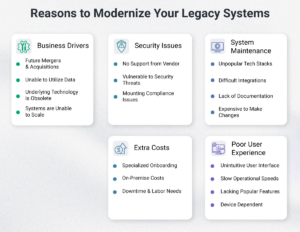
Despite IPO optimism and a public market rebound on the horizon, the attractiveness of private markets continues to grow exponentially. Myles Milston, co-founder and CEO of Globacap, explains why firms will still choose to stay – or even go – private for longer.
After a challenging year, Wall Street pinned its hopes on tech IPOs like Arm and Instacart which could have boosted the entire funding landscape.
There has been a lag in global IPO activity in 2023 so far. In the first half of this year, the US had its lowest IPO volume and value since 2015, Europe had its lowest amount of listings since 2009, and IPO activity on the UK main market and AIM saw a 31% drop in deal numbers.
While the underwhelming IPOs will have dented confidence in recovering public markets, IPO activity will inevitably rebound. That said, it won’t be the same dominant force it once was.
There’s a new, increasingly attractive alternative to the headaches, sky high fees and risk of an IPO that Arm and Instacart will know better than most, given their recent choppy debuts – private markets.
The growing attractiveness of private markets means firms will increasingly stay private for longer, or even permanently.
Confidence in IPOs will bounce back
A bout of optimism is one thing, but whether that directly translates into significant success in the public market is another.
The world’s markets are still experiencing quite a bit of turbulence, from rising interest rates and record inflation to looming global recession and ongoing geopolitical conflict.
Not all firms will be able, never mind willing, to navigate through this and prepare for a public launch. Deloitte’s recent Road to Next report on private financial markets found that despite optimism and a seemingly robust pipeline, not many firms are actually prepared to make the jump and go public.
That said, the fickle nature of financial markets means that a series of successful IPOs could go a long way in building confidence in public markets.
According to PitchBook, around 220 VC-backed companies should have listed since early 2022, and these businesses are expected to rush their IPOs when the market improves.
Further, there are over 2,000 companies with an aggregate valuation of nearly $603 billion that last raised cash in funding rounds 18 to 24 months ago, giving rise to speculation that we could have a whole host of activity in the next few months.
However, one thing many analysts aren’t factoring in is the growing attractiveness of private markets. Firms are staying private for longer as they realise they can access the capital they need without going through the headache and potential risk of an IPO.
Private markets are gaining favour
Over the past decade, private markets have made major strides compared to their public peer, growing at double the rate of major developed public markets and reaching a 170% increase in capitalisation.
Firms are also staying private for longer. From 1980 to 2021, the median age of a technology company going public was eight years. In three of the four calendar years between 2018-2022, the median age was 12 years.
An estimated US$22.6 trillion of capital is already invested in private markets, an investment that shows no sign of stopping, despite ongoing economic choppiness. The increase in venture capitalist and private equity groups able to raise and deploy vast pools of capital and a growing private market AUM means that companies of all sizes can compete on even footing with those in the public market.
Turmoil in public markets has also given private markets a boost. In the first half of 2023 in the US, there were more companies taken private than listed via IPOs. There were 47 proposed or completed deals to take a public firm private with a total value of $113 billion, compared to 39 US-based companies that have gone public via traditional IPOs on domestic exchanges, raising a modest $9.3 billion.
Private markets have increased funding and boosted liquidity, and the technology is available to automate the end-to-end process. As a result, companies planning to list and even those who have already gone public, are seeing private markets as a more attractive, efficient option.
Closing the efficiency gap between public and private markets
In addition to the vast pools of funding on offer, the growing sophistication of technology has closed the efficiency gap between public and private markets.
The expansion of secondary liquidity has removed one of the main advantages of being public. Private markets today are quickly developing and adopting the infrastructure for price discovery and trading in private shares that is similar to that of stock exchanges.
Digitising processes like issuance, transferability, and settlement is also helping to streamline private markets, reduce overall costs, and improve efficiency for intermediaries.
While I fully expect to see IPO markets rebound, the argument for staying private is strengthening. Firms can now avoid the complexity and cost of going public, keep control of their business and instead, secure the funding and liquidity they need from private markets.
- SEO Powered Content & PR Distribution. Get Amplified Today.
- PlatoData.Network Vertical Generative Ai. Empower Yourself. Access Here.
- PlatoAiStream. Web3 Intelligence. Knowledge Amplified. Access Here.
- PlatoESG. Carbon, CleanTech, Energy, Environment, Solar, Waste Management. Access Here.
- PlatoHealth. Biotech and Clinical Trials Intelligence. Access Here.
- Source: https://www.finextra.com/blogposting/25152/despite-an-ipo-rebound-firms-will-still-turn-to-private-markets?utm_medium=rssfinextra&utm_source=finextrablogs
- :has
- :is
- :not
- 000
- 12
- 2021
- 2022
- 2023
- 24
- 39
- 7
- a
- Able
- access
- activity
- actually
- addition
- Adopting
- advantages
- age
- aggregate
- ago
- aim
- All
- already
- also
- alternative
- amount
- amp
- an
- Analysts
- and
- Another
- ARE
- argument
- ARM
- AS
- At
- attractive
- automate
- available
- avoid
- BE
- been
- being
- Better
- between
- Billion
- Bit
- Bloomberg
- boost
- Boosted
- Bounce
- Building
- business
- businesses
- but
- Calendar
- CAN
- capital
- Cash
- ceo
- challenging
- Choose
- closed
- Co-founder
- Companies
- company
- compared
- compete
- Completed
- complexity
- confidence
- conflict
- continues
- control
- Cost
- Costs
- could
- deal
- Deals
- Debuts
- decade
- deloitte
- deploy
- Despite
- developed
- developing
- directly
- discovery
- do
- Domestic
- dominant
- double
- Drop
- Early
- Economic
- efficiency
- efficient
- end-to-end
- Entire
- equity
- Even
- Exchanges
- expansion
- expect
- expected
- experiencing
- Explains
- exponentially
- factoring
- far
- Fees
- few
- financial
- Finextra
- Firm
- firms
- First
- For
- Force
- found
- four
- from
- FT
- fully
- funding
- funding rounds
- gaining
- gap
- geopolitical
- given
- Giving
- Global
- global recession
- Go
- going
- gone
- Group’s
- Grow
- Growing
- had
- Half
- Have
- headaches
- helping
- High
- hopes
- horizon
- host
- HTML
- HTTPS
- i
- improve
- improves
- in
- Increase
- increased
- increasingly
- inevitably
- inflation
- Infrastructure
- instacart
- instead
- interest
- Interest Rates
- intermediaries
- into
- invested
- investment
- IPO
- issuance
- IT
- ITS
- jpg
- jump
- Keep
- Know
- landscape
- Last
- launch
- like
- Liquidity
- List
- Listed
- Listings
- Long
- longer
- looming
- lowest
- made
- Main
- major
- make
- many
- Market
- Markets
- markets rebound
- McKinsey
- means
- mind
- modest
- months
- more
- most
- Nature
- Navigate
- nearly
- Need
- never
- New
- next
- no
- now
- of
- offer
- on
- once
- ONE
- ongoing
- Optimism
- Option
- or
- overall
- past
- peer
- permanently
- pipeline
- Pitchbook
- planning
- plato
- Plato Data Intelligence
- PlatoData
- Pools
- potential
- Prepare
- prepared
- price
- private
- Private Equity
- private markets
- process
- processes
- proposed
- public
- Public Launch
- Public Market
- quickly
- quite
- raise
- raised
- raising
- Rate
- Rates
- reaching
- rebound
- recent
- recession
- record
- recovering
- reduce
- Removed
- report
- result
- Rise
- rising
- Risk
- robust
- robust pipeline
- rounds
- rush
- s
- Said
- same
- saw
- secondary
- secure
- see
- seeing
- seemingly
- Series
- settlement
- Shares
- should
- Shows
- sign
- significant
- similar
- since
- sizes
- Sky
- So
- so Far
- sophistication
- speculation
- stay
- staying
- Still
- stock
- stock exchanges
- stopping
- streamline
- street
- strengthening
- strides
- success
- successful
- Take
- taken
- tech
- Technology
- than
- that
- The
- The Capital
- the UK
- their
- There.
- These
- they
- thing
- this
- this year
- those
- three
- Through
- to
- today
- Total
- Trading
- traditional
- Trillion
- turbulence
- TURN
- Uk
- us
- Valuation
- value
- Vast
- venture
- venture capitalist
- via
- volume
- Wall
- Wall Street
- was
- Way..
- we
- were
- when
- whether
- which
- WHO
- whole
- why
- will
- willing
- with
- without
- world
- year
- years
- zephyrnet













